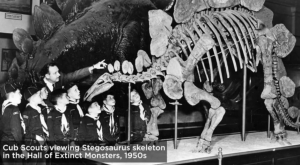 It is a pride for any museum to document and organise artefacts and artwork, with most of the work being done by taking photographs or by hand. Nowadays, the 3D scanning phenomena is gaining quite popularity within this circle as it is been used to create 3D objects so as to have their own permanent copies with microscopic detailing. This is good news for scientists, archaeologists, historians and others who can now study such artefacts without being physically present inside a museum and viewing them in person.
It is a pride for any museum to document and organise artefacts and artwork, with most of the work being done by taking photographs or by hand. Nowadays, the 3D scanning phenomena is gaining quite popularity within this circle as it is been used to create 3D objects so as to have their own permanent copies with microscopic detailing. This is good news for scientists, archaeologists, historians and others who can now study such artefacts without being physically present inside a museum and viewing them in person.
This doesn’t end here as many speculating 3D scanning to actually change the way the museums work. With 3D scanning, the museum authorities can now successfully scan and reproduce identical models of their famous exhibits and can sell them so as to create a steady flow of income. They no longer need to depend on philanthropists for the functioning of the museum.
The Smithsonian Institution, Washington DC., is currently using this technology. They are creating 3D models of the museum areas and their on-display objects, with the 3D lab of the institution getting to work with the museum curators recently to scan the Dinosaur Hall and the numerous fossils featured within its walls. Their chief aim is in restoring the layout and displaying the configuration exactly to its previous design.
The Smithsonian Institute’s effort in using 3D scanning will enable them in redesigning their exhibit’s layout later, without going through the trouble of moving and shifting things. The chances of sustaining any kind of damage get reduced proportionately with the lesser number of times such artefacts are moved.
Adam Metallo and Vince Rossi, 3D specialists of the lab, are being named “Laser Cowboys” who wants to create 3d models of anything and everything under the roof of the Smithsonian. Currently, the number stands at 137mn items with just 2% of these being lucky enough to get displayed at once. If such massive 3D scanning gets completed, it will enable tourists all over to view those items any time.
With 3D scanning getting readily accessible and less related with wealth, one can easily expect more projects such as the Smithsonian’s to emerge. The equipment and the software is getting a lot user-friendly every passing minute and the day is quite near when every museum will eventually be adopting this tech. It can reap great benefits for any industry out there and will be quite interesting to witness how this technology moves from here on.
Author: Tony Rolland provides review services for EMS USA, Florida based company offers 3D printing and 3D scanning services and also product development products such as 3D Systems 3D Printers and 3D Scanners, Konica-Minolta 3D Scanners, Steinbichler 3D Scanners, Surphaser long range scanners, SensAble Technologies, SpaceClaim CAD software and more. EMS has offices located inTampa, Atlanta and Detroit.
Picture credit: http://blogs.smithsonianmag.com
Source: http://www.ems-usa.com/emsblog/2013/07/10/3d-scanning-and-museums-go-hand-in-hand/
